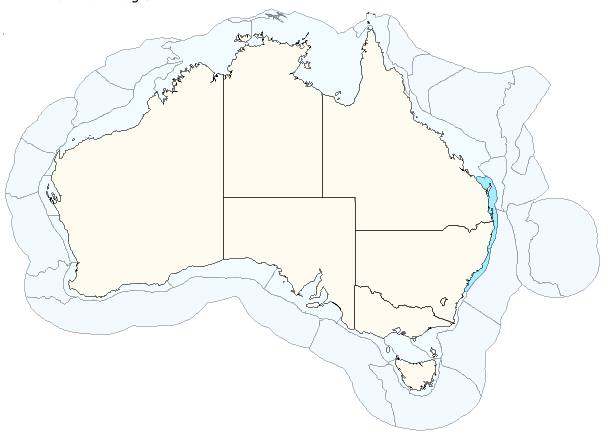Local Distribution
C. polypus can be found almost the entire length of the Eastern coast of Australia. Specimens have been found from the Great Barrier Reef down to Southern New South Wales. The area that C. polypus is most likely to be found extends from the Southern Great Barrier Reef (Rockhampton) to Southern New South Wales (Nowra), as shown in the blue area on the map below. (Australian Government, 2013) Within Moreton Bay itself, the most reliable spots to find C. polypus are Henderson Rock (Fautin, 2013), a popular dive site off Moreton Island, and Frenchmen's Beach, on North Stradbroke Island. The specimens of C. polypus located at Frenchman's Beach are attached to pumice stones that wash ashore with the tide.
C. polypus is generally associated with Dardanus deformis in Australia. (Fautin, 2008)

|
| Figure 1: Map showing distribution of C. polypus within Australia. (Australian Government, 2013) |
Henderson Rock is located on the Eastern side of Moreton Island. The figure below is a map of the Moreton Bay Marine Park and shows the local dive sites and locations of anemone collection. From the Department of National Park, Recreation, Sport and Racing webpage. Click image to enlarge.

|